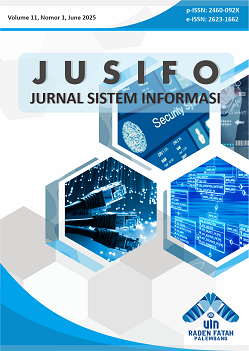Visual Attention Segmentation of Genshin Impact Characters: An Eye-Tracking and Hierarchical Clustering Analysis of First-Time Players
Main Article Content
Abstract
This study investigates the visual attention patterns of first-time players toward character designs in anime-style role-playing games, using Genshin Impact as the research context. An eye-tracking experiment was conducted with 60 participants to capture gaze behavior during exposure to four-character stimuli. The analysis focused on heatmaps, dwell time, and first fixation points, consistently revealing a dominant focus on the character’s body region, regardless of character type or visual variation. Hierarchical clustering further segmented participants into three distinct gaze profiles: lateral scanning, peripheral attention to symbolic elements, and centralized body-centric focus. These findings underscore the importance of adaptive character design strategies that prioritize the body region for conveying emotional and narrative cues while enhancing peripheral elements to improve engagement. The study contributes to the fields of game user experience and visual attention research by integrating eye-tracking data with clustering techniques, offering actionable insights for game developers and interface designers.
Article Details

This work is licensed under a Creative Commons Attribution-ShareAlike 4.0 International License.
Authors who publish with this journal agree to the following terms:
- Authors retain copyright and grant the journal right of first publication with the work simultaneously licensed under a Creative Commons Attribution License that allows others to share the work with an acknowledgement of the work's authorship and initial publication in this journal.
- Authors are able to enter into separate, additional contractual arrangements for the non-exclusive distribution of the journal's published version of the work (e.g., post it to an institutional repository or publish it in a book), with an acknowledgement of its initial publication in this journal.
- Authors are permitted and encouraged to post their work online (e.g., in institutional repositories or on their website) prior to and during the submission process, as it can lead to productive exchanges, as well as earlier and greater citation of published work.
How to Cite
References
Alemdag, E., & Cagiltay, K. (2018). A systematic review of eye tracking research on multimedia learning. Computers & Education, 125, 413–428. https://doi.org/10.1016/J.COMPEDU.2018.06.023
Angelia, C., Hutabarat, F. A. M., Nugroho, N., Arwin, A., & Ivone, I. (2021). Perilaku konsumtif gamers genshin impact terhadap pembelian gacha. Journal of Business and Economics Research (JBE), 2(3), 61–65. https://doi.org/10.47065/JBE.V2I3.909
Antunes, J., & Santana, P. (2018). A study on the use of eye tracking to adapt gameplay and procedural content generation in first-person shooter games. Multimodal Technologies and Interaction 2018, Vol. 2, Page 23, 2(2), 23. https://doi.org/10.3390/MTI2020023
Bakkelund, D. (2022). Order preserving hierarchical agglomerative clustering. Machine Learning, 111(5), 1851–1901. https://doi.org/10.1007/S10994-021-06125-0
Blascheck, T., Kurzhals, K., Raschke, M., Burch, M., Weiskopf, D., & Ertl, T. (2014). State-of-the-art of visualization for eye tracking data. 16th Eurographics Conference on Visualization - State of the Art Reports, EuroVis-STAR 2014, 63–82. https://doi.org/10.2312/EUROVISSTAR.20141173
Burch, M., Veneri, A., & Sun, B. (2020). Exploring eye movement data with image-based clustering. Journal of Visualization, 23(4), 677–694. https://doi.org/10.1007/S12650-020-00656-9
Friedman, A. (2015). The role of visual design in game design. Games and Culture, 10(3), 291–305. https://doi.org/10.1177/1555412014559977
Fu, X., Franchak, J. M., MacNeill, L. A., Gunther, K. E., Borjon, J. I., Yurkovic-Harding, J., Harding, S., Bradshaw, J., & Pérez-Edgar, K. E. (2024). Implementing mobile eye tracking in psychological research: A practical guide. Behavior Research Methods 2024 56:8, 56(8), 8269–8288. https://doi.org/10.3758/S13428-024-02473-6
Hahn, L., & Klein, P. (2025). Clustering eye-movement data uncovers students’ strategies for coordinating equations and diagrams of vector fields. Educational Studies in Mathematics, 118(3), 359–385. https://doi.org/10.1007/S10649-023-10243-Y
Itti, L., & Koch, C. (2001). Computational modelling of visual attention. Nature Reviews Neuroscience 2001 2:3, 2(3), 194–203. https://doi.org/10.1038/35058500
Kherif, F., & Latypova, A. (2020). Principal component analysis. Machine Learning: Methods and Applications to Brain Disorders, 209–225. https://doi.org/10.1016/B978-0-12-815739-8.00012-2
Kiili, K., Ketamo, H., & Kickmeier-Rust, M. D. (2014). Evaluating the usefulness of eye tracking in game-based learning. International Journal of Serious Games, 1(2). https://doi.org/10.17083/IJSG.V1I2.15
Lutfi, M. R. A. R., Ramadhan, H. M. T., & Saputra, W. S. J. (2022). Penerapan kecerdasan buatan dalam pemilihan artifact pada game genshin impact dengan logika fuzzy tsukamoto. Jurnal Ilmiah Ilmu Komputer Fakultas Ilmu Komputer Universitas Al Asyariah Mandar, 8(2), 71–75. https://doi.org/10.35329/JIIK.V8I2.226
Michailidis, L., Balaguer-Ballester, E., & He, X. (2018). Flow and immersion in video games: The aftermath of a conceptual challenge. Frontiers in Psychology, 9(SEP), 393107. https://doi.org/10.3389/FPSYG.2018.01682
Ng, S. C. (2017). Principal component analysis to reduce dimension on digital image. Procedia Computer Science, 111, 113–119. https://doi.org/10.1016/J.PROCS.2017.06.017
Prasetya, X. F. S., & Anggapuspa, M. L. (2022). Analisis visual desain karakter xiao dalam game genshin impact. BARIK, 4(2), 185–198.
Salem, N., & Hussein, S. (2019). Data dimensional reduction and principal components analysis. Procedia Computer Science, 163, 292–299. https://doi.org/10.1016/J.PROCS.2019.12.111
Tanskanen, S. (2018). Player immersion in video games designing an immersive game project [Thesis, South-Eastern Finland University of Applied Sciences]. https://www.theseus.fi/bitstream/handle/10024/147016/tanskanen_selja.pdf
Tatler, B. W. (2007). The central fixation bias in scene viewing: Selecting an optimal viewing position independently of motor biases and image feature distributions. Journal of Vision, 7(14), 4–4. https://doi.org/10.1167/7.14.4
Tharwat, A. (2016). Principal component analysis - a tutorial. International Journal of Applied Pattern Recognition, 3(3), 197. https://doi.org/10.1504/IJAPR.2016.079733
Wegner-Clemens, K., Rennig, J., Magnotti, J. F., & Beauchamp, M. S. (2019). Using principal component analysis to characterize eye movement fixation patterns during face viewing. Journal of Vision, 19(13), 2–2. https://doi.org/10.1167/19.13.2

